Downhill Battle: How Gwen Jorgensen pushed past her fears ahead of Rio Olympics
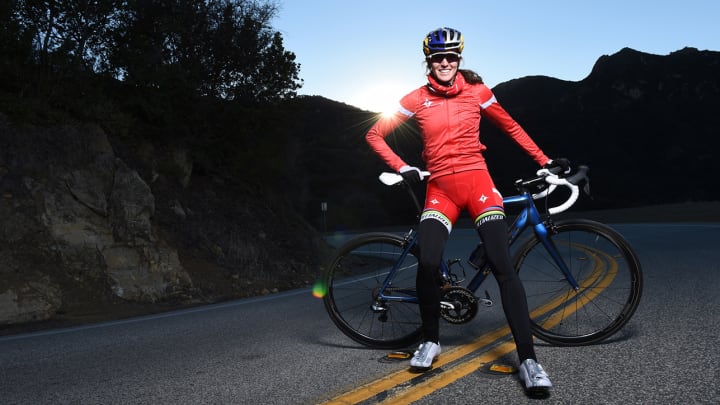
This story appeared in the August 8, 2016 issue of SPORTS ILLUSTRATED. To subscribe to the magazine, click here.
Gwen Jorgensen removed her ball cap and pulled on a gleaming white virtual-reality headset. In an instant she was transported from a hotel conference room in Thousand Oaks, Calif., to a twisting, narrow and steep road plunging to Copacabana Beach, site of the upcoming Olympic triathlon, in which she will be a heavy favorite despite one modest vulnerability.
"Yeah, this is the descent I hate," said a grim Jorgensen as she swooped virtually through the same tight left turn that an Aussie triathlete named Ryan Bailie had overcooked the previous August, at the Olympic test event. Taking too much speed into that bend, Bailie had executed a dramatic front-flip over the barricade while still clipped into his bike. (After dusting himself off, he remounted and finished 14th.)
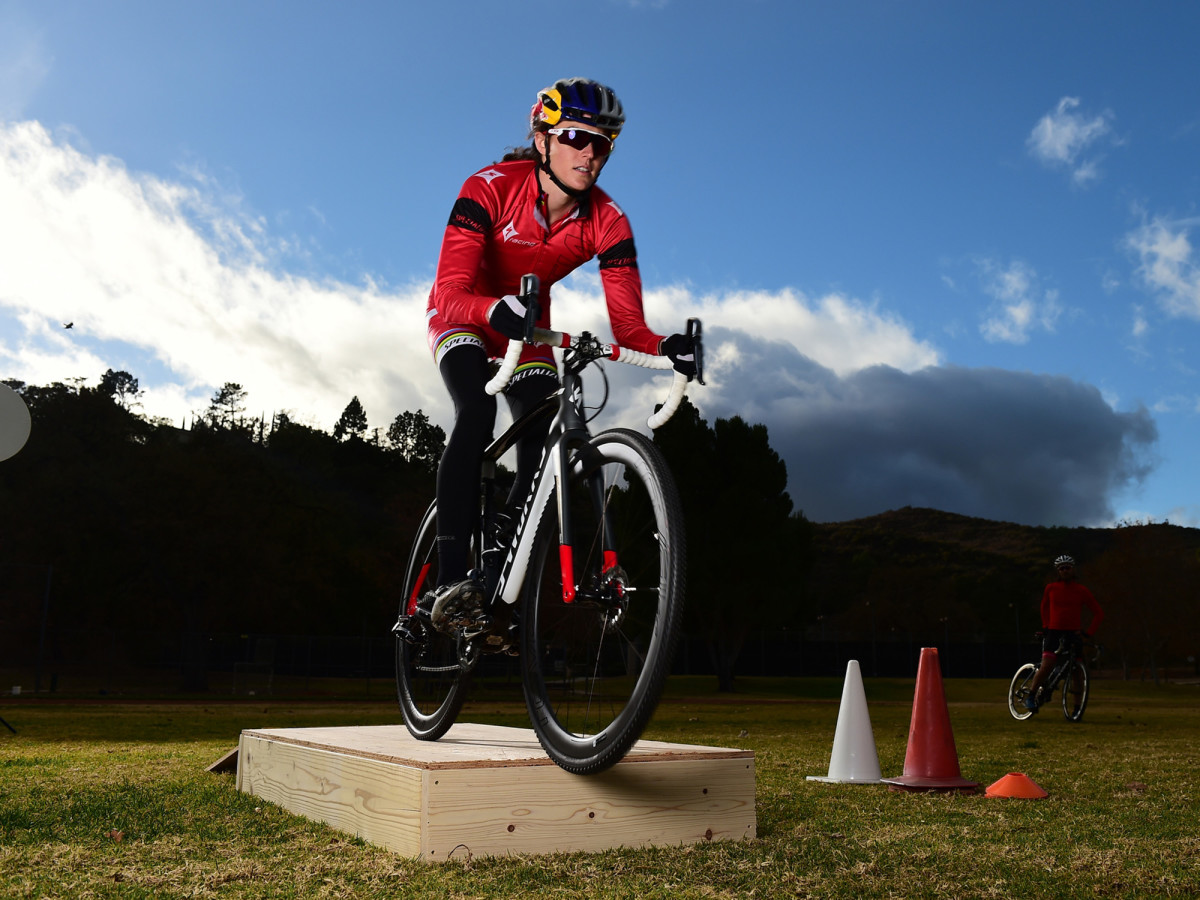
The bike leg—in which athletes will traverse the same five-kilometer loop eight times—is one-third of the triathlon, and that screaming descent is less than 7% of the loop. Top to bottom it will take competitors about half a minute. Yet more than any other section of the course, that harrowing sprint preoccupies Jorgensen. That dash, times eight, will likely decide the color of her medal or if she makes the podium at all. It is what brought her and a dozen other people together last December for a three-day clinic paid for by her sponsor, Red Bull, and designed to ease her fears about hauling ass downhill. This is the descent I hate. On this, the first evening of what people took pains not to describe as a crash course, it's likely that she hated it just a little less than when she'd rolled out of bed that morning.
Jorgensen, 30, will swim nearly a mile in water that ranges from dodgy to disgusting, in a country battling a mosquito-borne virus and its worst economic crisis since the 1930s. Yet the real story of these Olympics will not be pollution or Zika or government corruption, but the ways athletes cope with a host of performance-related anxieties that trigger everything from butterflies to panic attacks.
To meet those athletes, and the mental coaches who would exorcise their demons, is to realize that these fears are not conquered. Rather, they are accommodated, distracted, bargained with or lulled to sleep with positive—or, if this is all the athlete can muster, neutral (but under no circumstances negative)—self-talk. It is less Gandalf the Grey grappling with the Balrog than it is Stuart Smalley earnestly reciting his Daily Affirmations: I deserve good things. I am an attractive person. I am fun to be with and doggone it, people like me.
Triathlon preview: Gwen Jorgensen out for redemption at Rio Olympics
"I've always hated speed," says Jorgensen, whose path to dominance in Olympic-distance triathlon—she is the two-time defending world champion in a sport she didn't try until she was 24, and she's as dominant in her sport as any other athlete in Rio is in his or hers—featured as many twists and dips as that bike course in Brazil. An accounting major and good-but-not-great swimmer at Wisconsin, Jorgensen was talked into trying out for track midway through her sophomore year. In her brief time with the Badgers, she ran the fifth fastest 5,000-meter time in school history and finished seventh in the 2008 NCAA championships. And her metamorphosis had only begun.
Casting a covetous eye on NCAA runners and swimmers, USA Triathlon in 2009 launched a college recruitment program, putting Barb Lindquist, an '04 triathlon Olympian, in charge. After studying Jorgensen's swimming and track results, Lindquist informed her: "On paper you could go to the Olympics."
By this time Jorgensen was a newly minted CPA spending most of her waking hours in a cubicle in the Milwaukee offices of Ernst & Young. "I didn't believe [Lindquist]," she says. "I'd tried to be a successful athlete. I knew what a big jump she was talking about. I wasn't sure I was capable of it."
Jorgensen agreed to give tri a try. The swimming leg wasn't a problem. A standout distance freestyler and IM swimmer at Waukesha (Wis.) South High, she'd qualified three years running for the Big Ten and NCAA championships while in Madison. The run, she quickly discovered, was her eraser and equalizer. Widely considered the fastest runner in the history of triathlon, she could count on making up time on the final leg.
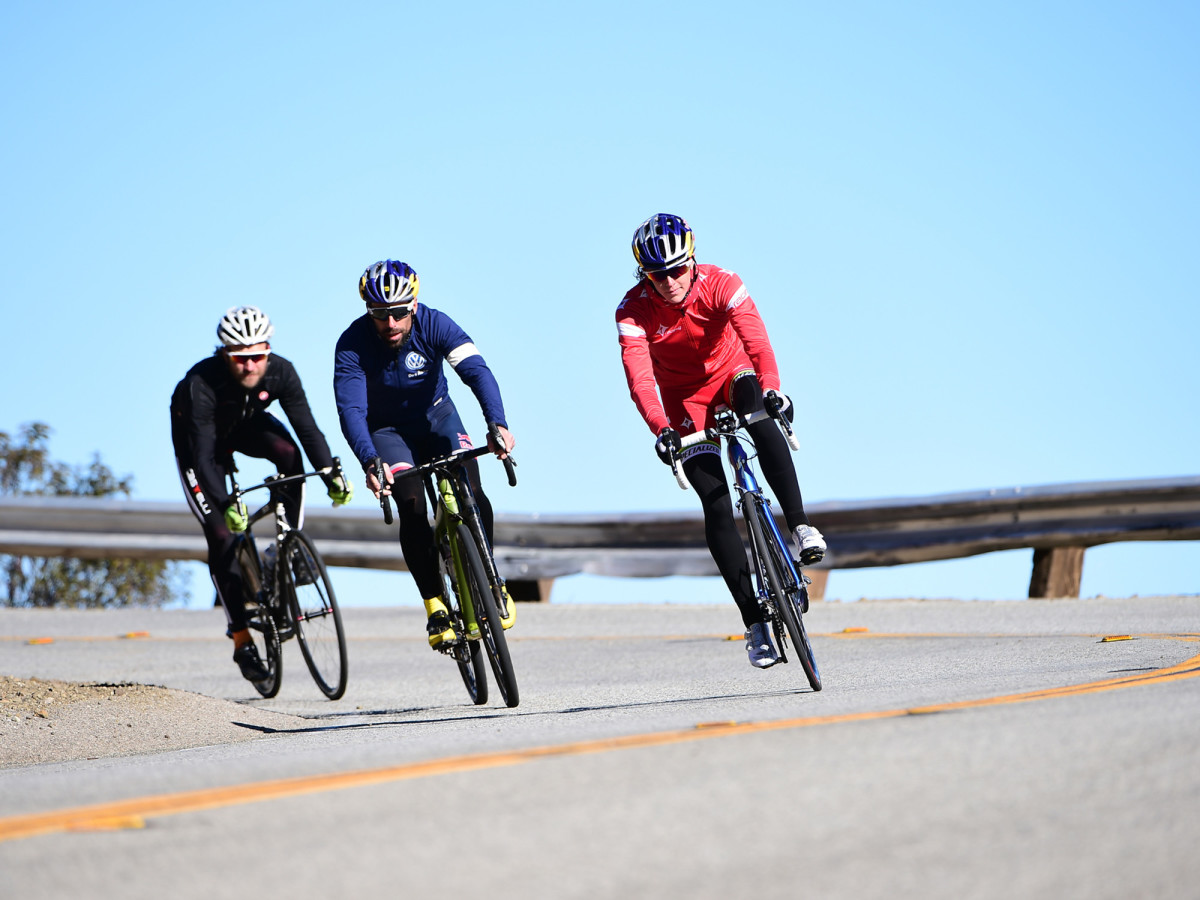
Less than two years after her first triathlon, Jorgensen made the U.S. Olympic team. She finished 38th in London; a flat tire in Hyde Park cost her a medal.
In the intervening quadrennium, Jorgensen has emerged as the International Triathlon Union's equivalent of Usain Bolt. Her win in a World Triathlon Series event in Leeds, England, on June 12, was her 15th in her last 16 races, dating to April 2014. Those triumphs tend to stick to a similar script: Jorgensen 1) stays with the front group, or just behind it, through the 1.5-km swim and 40-km bike, then 2) lays waste to the field in the 10-km run.
But even a juggernaut (Jorgernaut?) can have a weak spot: biking. This is not to say that the discipline hasn't had some rewards for Jorgensen. It was on a group ride in Milwaukee in 2011 that a pro cyclist named Patrick Lemieux drifted back in the bunch to chat her up. After making conversation and dispensing tips to the newbie, he casually asked for her number. She gave it to him. "We just kind of stayed in touch for six months," he says. During that time Jorgensen took a leave from her job and moved to Florida to train for the '12 Games. "And then I went to visit her," says Lemieux. "I meant to stay for a week but ended up staying a month." The two were married in October 2014.
Jorgensen, Red Bull and her circle of advisers—including Lemieux—devoted much time in the year leading up to Rio focusing on biking. Specifically, they honed in on how Jorgensen reacts when the road goes downhill.
When the headset came off, Jorgensen sat around the table with the members of Team Gwen. The vibe was not unlike that of a group therapy session. "Where do you see yourself going down this?" asked Dave Zabriskie, a Tour de France stage winner and five-time U.S. national time trial champion. "In the front? Where do you usually sit?"
"I'd love to be in the front," replied Jorgensen, "but if you look at my history, a lot of times I tend to go to the back. The larger the group, the harder it is for me to maintain position."
"But," noted her husband, in a gently encouraging tone, "you've ridden in a group of 50 women and been in charge."
Jorgensen is much more comfortable when apart from the pack—whether behind or in front. The danger of riding solo in back is that she risks losing touch with the lead group, as happened in April in Brisbane, Australia. Jorgensen got off the bike two minutes behind the leaders. She ran all of them down but one—Great Britain's Helen Jenkins, who handed Jorgensen her first loss in 12 straight ITU races.
U.S. trio completes historic sweep of women’s 100 meter hurdles at Rio Olympics
On the bike she is scared of crashing in particular and of the unknown in general. "It's like, 'I can't see around that corner! What's going to happen?'" she says. "What it is, I guess, is that I want to always know there's a safe out when you get into any sort of ... situation. But I'm not confident I'll always have that out."
She's right. She won't. Jorgensen has hit the pavement before and will again. The point of the retreat in Thousand Oaks was to make her more comfortable descending. "You don't want to drain all the fear out," explained Team Gwen member Dean Golich, a coach and physiologist with Carmichael Training Systems. "You want some fear in there—to make the correct judgment." Here Golich was echoing the Greek tragedian Aeschylus, who believed fear "must keep its watchful place at the heart's controls."
The point was to prevent fear from usurping all of Jorgensen's controls—not to banish fear but to put it in its place.
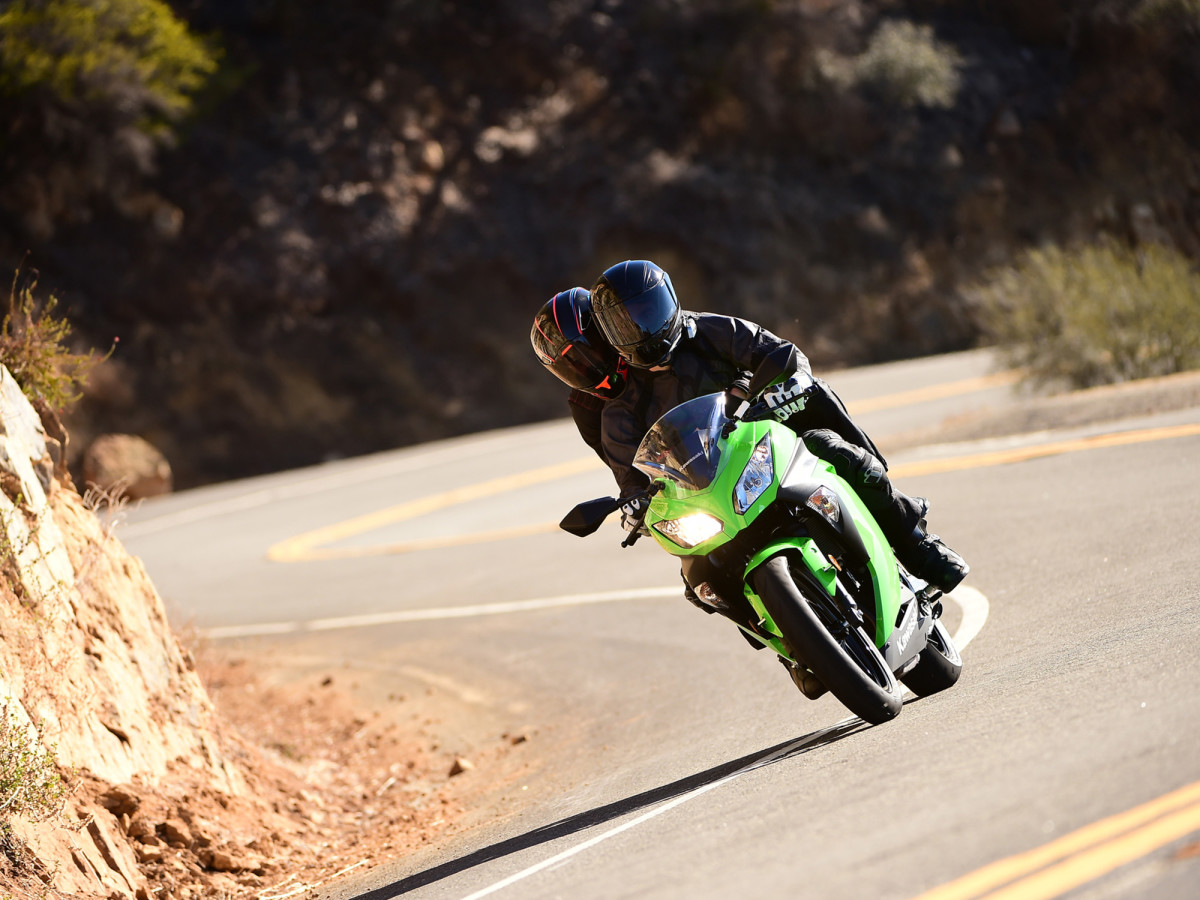
On a sun-splashed morning in the Santa Monica Mountains, the Olympics still eight months out, Jorgensen rode on the back of a sleek lime-green Kawasaki ZX-10R crotch rocket piloted by renowned Superbike rider Eric Bostrom. The Red Bull crew had selected a remote, steep, five-mile stretch of road with plenty of blind corners and chicanes. Later in the day she would take the descent, several times, on her Specialized Amira, but now she took a half-dozen runs as Bostrom's passenger. The idea was for her to get accustomed to speed and to note when and how Bostrom braked and what lines he took through turns.
They talked about where Bostrom was looking, and when. "You want to spend most of your time, say 90%, on the horizon," Bostrom said. "But you also want to scan. It's 'horizon, scan, scan, horizon.' You kind of do this dance with your eyes."
Halfway down, a rocky outcropping seemed to encroach on the road. Did that take Bostrom out of flow? No. "It's cool," he said between runs, "because you get really close to those outcroppings, and I'm amazed at how they were able to cut the road through the rock. Things like that make me happy."
"And it relaxes you?" said Jorgensen, slightly incredulous.
"It relaxes me."
U.S.’s Jenny Simpson won't let half-empty Rio stadium dull historic Olympic moment
That afternoon she took runs on her road bike behind Red Bull staffers Tim Johnson and Zabriskie, who offered more advice. The longer her gaze lingered on a rock in the road or an oncoming car, warned Johnson, a six-time national cyclocross champion, "the more space it takes up in your brain. Glance, but don't stare."
"We all hope the course holds no surprises," added Zabriskie, but it always does, the same way "you want to wake up to a clean house in the morning, but you have kids."
"Cars, cats, deer—turn everything into a variable," he counseled. "Variables can come at you any time, and your System One is automatically taking care of them."
System One?
"System One," he said. "The very fast-acting part of your brain. You don't even know it's doing stuff, but it's doing stuff."
Considering the purpose of the lesson, Zabriskie did not share with Jorgensen an account of how he was hit by an SUV on a training ride, on a swift descent, in 2003. The car turned left in front of him. After going airborne, Zabriskie landed on his left side, suffering multiple fractures and, on his left hand, the loss of his fingernails, which were torn out when his fingers "got stuck in the headlight."
In his first race back, at the Redlands Classic in California, Zabriskie went down in a pileup and had to be airlifted to a hospital. At the Giro d'Italia a few years later, riders ahead of him were "taking a natural"—urinating from their moving bikes—when they crashed. With no time to react, he flipped over his handlebars, fracturing a vertebra.
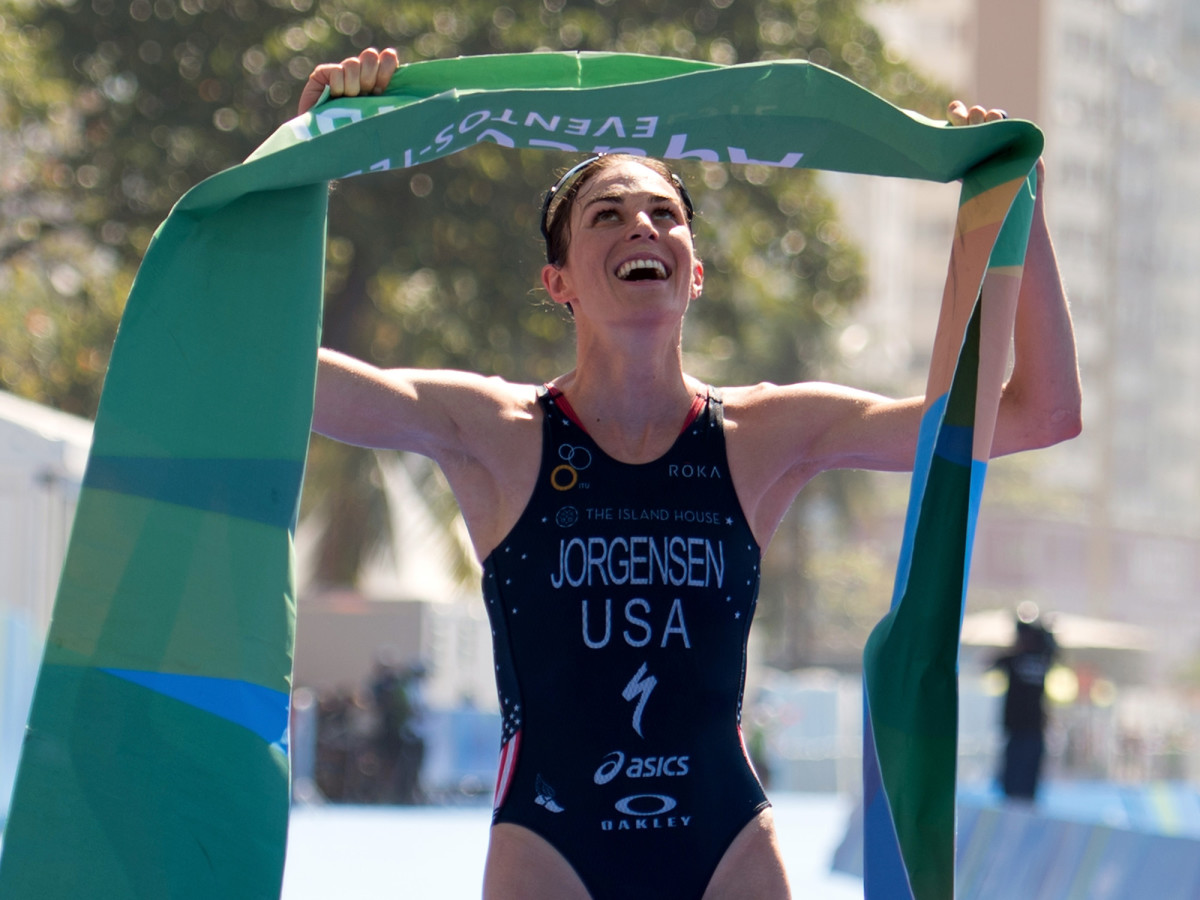
To review Zabriskie's medical history is to be reminded that, in many cases, the fears lurking in the hearts of athletes are highly reasonable. "There is no such thing as paranoia," Hunter S. Thompson contended. "Your worst fears can come true at any moment."
I wouldn't get knocked out cold," 30-year-old David Boudia was explaining, "but I would get the wind knocked out of me." A converted gymnast who applied his flipping and contortionists' skills to the discipline of diving, he was recounting some of the travails that attended his early years on the 10-meter platform.
"It's like someone slapping you as hard as they can, all over your body," Boudia continued. "Um, and for guys, when you're doing a belly flop, you're not just landing on your stomach. You're landing on your nuts, so it's like you're getting kicked in the groin 12 times."
Small wonder then, that Boudia began to experience what he describes as "paralyzing fear" as a 14-year-old, in his first year as a 10-meter diver. "It got to the point," he recalls, "I'd get nervous the day before practice and start making excuses, saying I didn't feel very well and maybe I shouldn't go to practice."
Boudia is a fantastic athlete who performed his first flips off the family sofa around the time he learned to walk. By age five he could do five consecutive back handsprings. But at 13 he risked becoming known as the high diver with a fear of heights. While his misgivings about jumping from the equivalent of a third-story window and hitting the water at 35 mph made perfectly good sense, he needed to mute them.
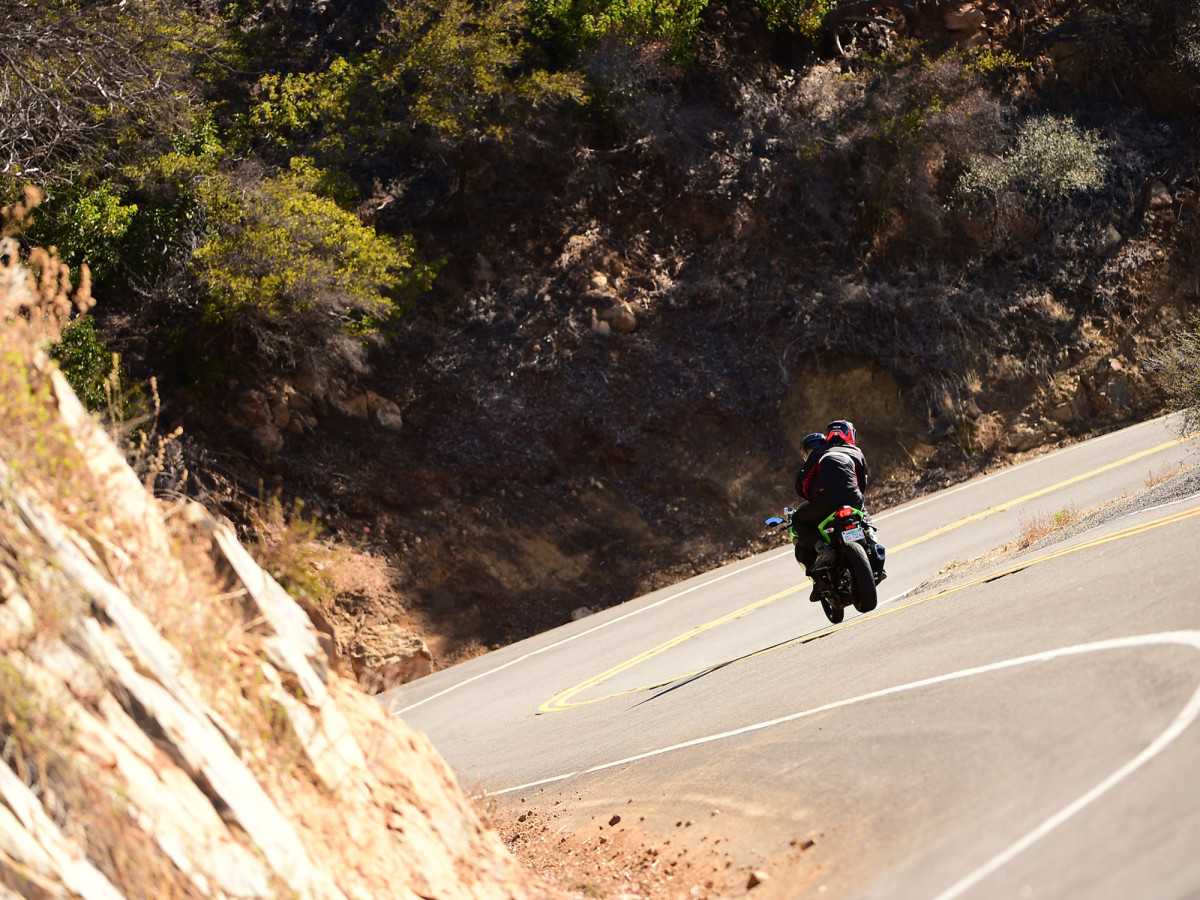
He began to see a sports psychologist who taught him breathing exercises to control his heart rate. Boudia learned to visualize dives and, better still, to sketch out each movement for a given dive on a piece of paper. Those "process goals," as Boudia calls them, got him past his fears and were instrumental in his attaining the "outcome goal" of competing in the Olympics.
When Boudia got to London, however, he was a mess. After struggling through a "terrible prelims," as he puts it, he was the 18th—and final—qualifier for the semis. That close call took some pressure off him. He was just happy to be there! He began to climb up the standings, which he ignored, focusing only on the dive at hand. His final dive, a near-perfect back 2½ somersault with 2½ twists, earned the highest score of the night, snatching gold from China's seemingly unbeatable Qui Bo, the world champion.
And what became of those fears? Are they gone for good? Of course not. They will accompany him to Rio. "They still creep in," Boudia allows. "But because I'm seasoned, I'm a veteran, I can push through them."
Chris Carr is a sports psychologist at St. Vincent Sports Performance in Indianapolis who has worked extensively with Boudia. In a discussion of positive and negative self-talk, he conjures a hypothetical diver whose mojo has gone missing: "He's struggling to land his inward 3½. He's coming out late and landing on his back." This nameless, red-backed diver is telling himself, mid-flight, Don't come out late! Don't come out late!
If he got that diver into his office, says Carr, "We would think about cues more relevant to executing the dive." He'd swap out Don't come out late! for, he says, "Spot mark—extend!—a positive cue that directs the behavior" and is "least likely to lead to an incorrect outcome."
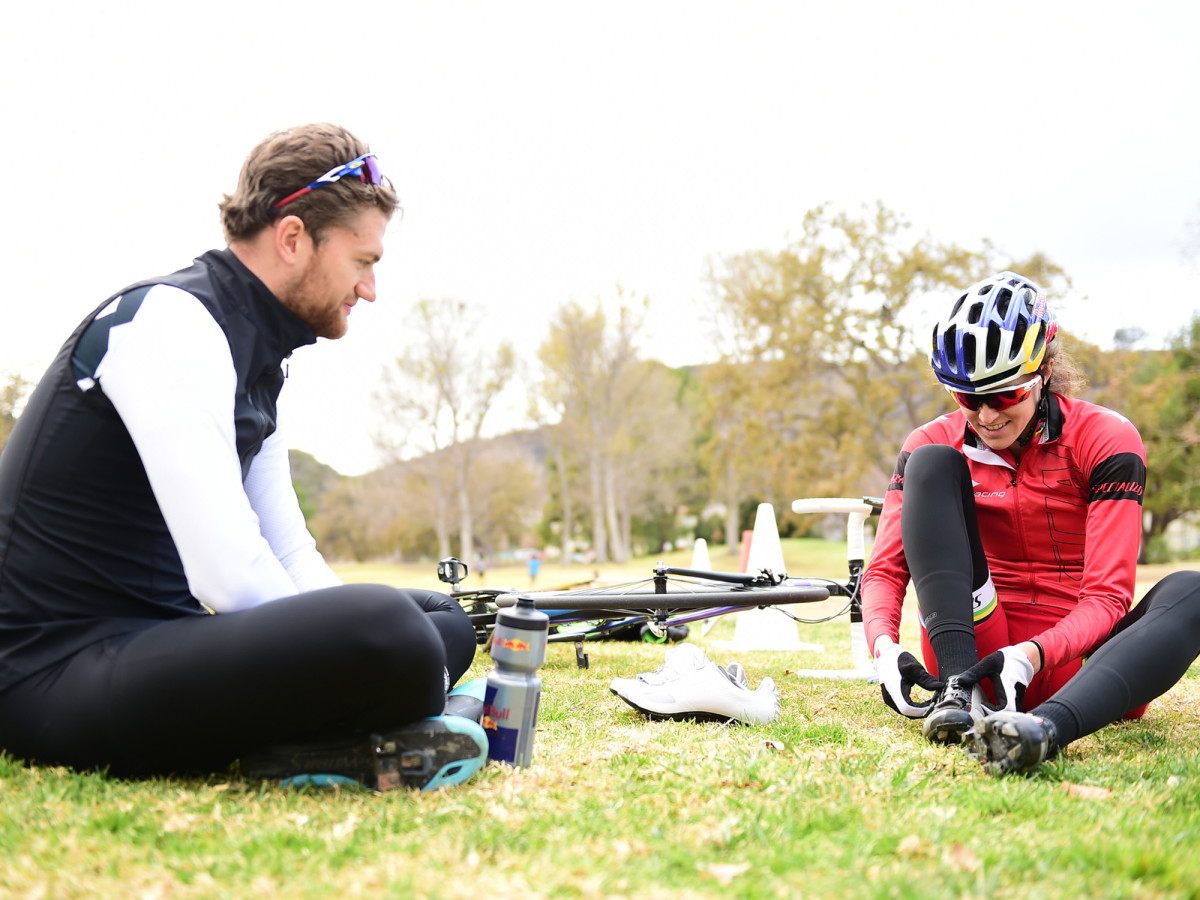
Trevor Moawad's eyes light up at the subject of self-talk. He is the president of Moawad Consulting Group, in Scottsdale, Ariz., and is also a "mental conditioning consultant" who works with the football programs of Alabama and Florida State and with a number of NFL players. To hear Moawad expound on the benefits of practicing "non-negativity" is to find it that much easier to believe that his father, Bob, was president of the National Association for Self-Esteem. "[While] positive thinking is no guarantee," Trevor has written, "I fully believe that negative thinking does work. It works negatively. It gains its most power through the spoken word."
Moawad often uses the example of his friend Michael Johnson, who had the chutzpah to compete in the 1996 Atlanta Olympics in gold shoes—this after failing to make it out of the semifinals in the 200 meters in Barcelona four years earlier. In Atlanta he took gold in the 200 and the 400, in part because he kept a monklike focus on the steps it would take to accomplish his goal. "Your brain can only think of one thing at a time," says Moawad. "It's called the law of substitution. So if my mind is focused on driving my arms forward, it physiologically can't be on anything else, such as, 'How big an ass am I going to look like if I win a bronze medal wearing gold shoes?' That never crossed his mind."
What crossed Taylor Phinney's mind as he lay screaming on the road in Chattanooga was that his cycling days might be over. Coming down Lookout Mountain at 60 mph during the USA Cycling Professional Road Championships two years ago, Phinney swerved to avoid a race official on a motorcycle. He collided with a guardrail, suffering a compound fracture of his left tibia and severing the patellar tendon. He's still missing a chunk of his kneecap.
Five weeks later, his tibia held together with a rod and five pins, Phinney pedaled unevenly—and against doctor's orders—up Lee Hill, a stiff climb near his home in Boulder, Colo. "I just wanted to squash any idea that I would have difficulty doing the one thing I love the most about racing." That is, going downhill fast.
Abbey D'Agostino, Nikki Hamblin exemplify Olympic spirit after falling in 5,000 meters
Zipping around the first switchback, Phinney nearly collided with a deer. "I thought, Here we go again," he says. After that near miss, he smoked the descent. Phinney knew he had come back.
He had banished fear but left the door ajar for a more interesting guest: curiosity. Forced into a yearlong sabbatical from cycling, Phinney embarked on a kind of vision quest. He took flying lessons. He took up painting, which quickly became an obsession and a vital means of self-expression. Free to wander outside what he calls the "small bubble" of cycling, "I feel like I'm starting to be able to see the world for what it is," he says. "It's opened my eyes and my mind."
After a year and a half on his own, Phinney is back on schedule with his cycling team, BMC. "Everything's laid out for you, your meals, massage, therapy, your role in the race," he says, sounding somewhat stifled. But if Phinney is chafing a bit, it didn't affect his ride in the U.S. Pro time trial championships in Winston-Salem, N.C., on May 27. After the race he tweeted, in succession:
Exactly two years ago today, my surgeon in TN told me to send him a picture of myself riding a bike if I was ever able to ride again.
This morning, I won the national championship time trial. I've been kind of confused all day since then ... mostly because it was very painful
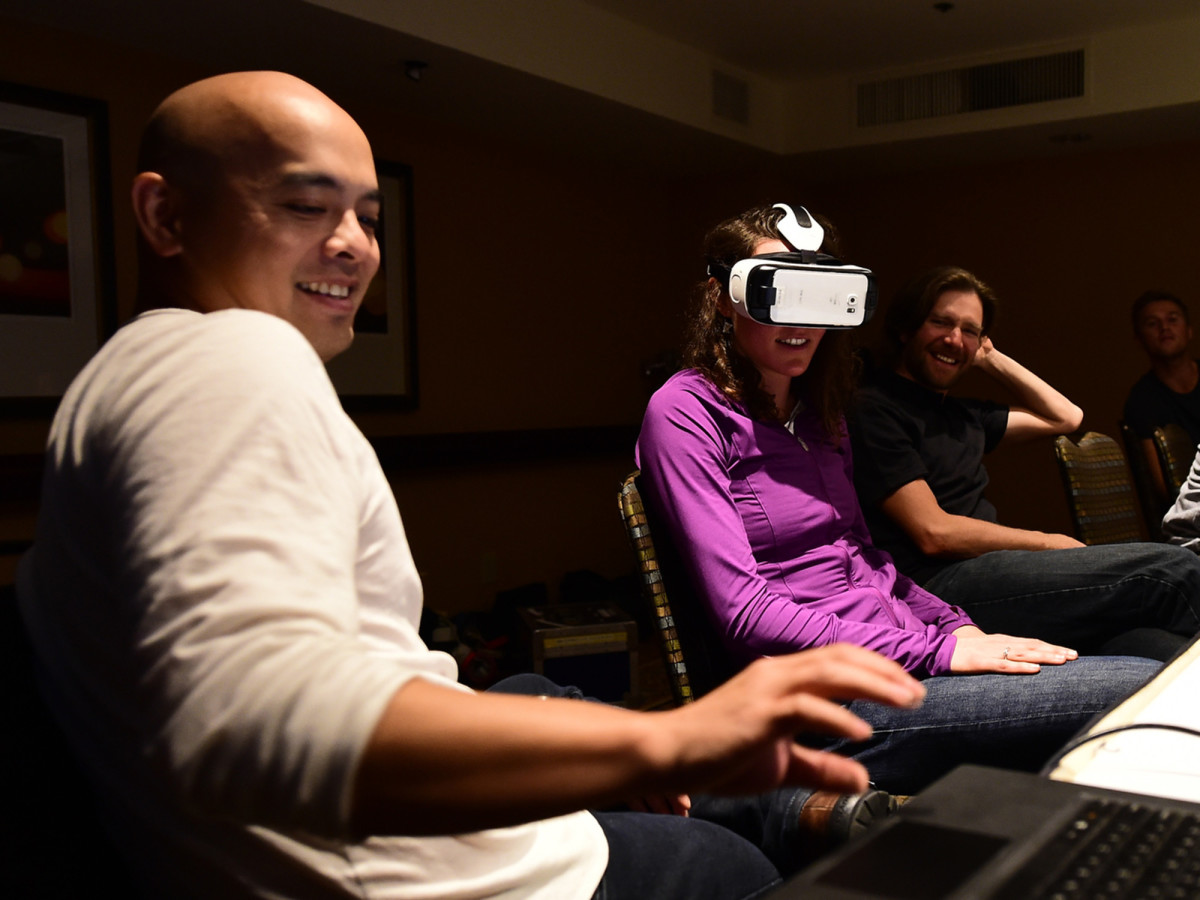
Phinney will ride the time trial and the road race in Rio, hoping to improve on his fourth-place finishes—in both events—in London. "The classical angle to this story," he says, "would be that I overcame my fears and got back on my bike despite flashbacks to the accident. And I'm some kind of hero because I was able to push through that fear. But, honestly, getting back on the bike was the easy part. If anything, I'm afraid I've seen too much."
Having sampled life outside the bubble, he's reluctant to step back in.
Back in Thousand Oaks, in that hotel, Gwen Jorgensen is gazing into the virtual-reality headset, studying the scary downhill above Copacabana Beach, the one she'll need to nail eight times to win Olympic gold. She might do just that.
"In the beginning," said Zabriskie after the group disbanded, "she had issues with speed and was kind of shaky going downhill. By the end she was faster, much more confident, leaning the bike, almost diving into corners, to the point where it made me a little nervous."
"Yeah, this is the descent that I hate," says Jorgensen, before smiling and correcting herself: "I mean, that I like. No, that I love, and is now my best friend."
